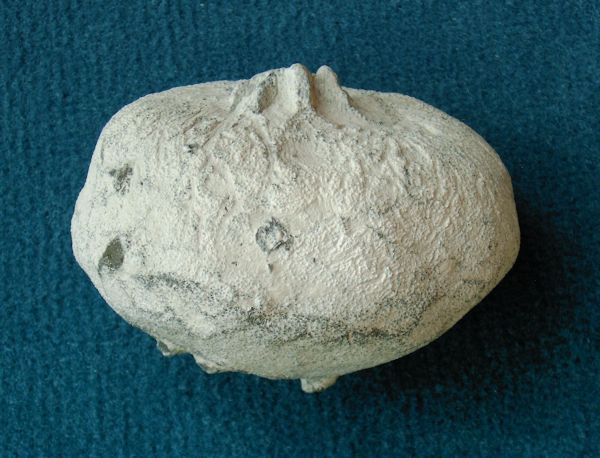
Callopegma acaule
Zittel 1878
Callopegma acaule is disc- or cone-shaped and commonly 50 to 100 mm in diameter. In its center, there are several large oscules, separated by thin and protruding septa. The top surface also shows a pattern of irregularly radiating furrows.

Cross section of Callopegma acaule, showing peculiar strands of fibrous spicules, probably derived from strongly distorted tetraclones, which originate in the root-like processes at the base of the sponge and end in the septa between the oscules on the summit center.
Note also the dense cortex-like rind at the base of the sponge, which consists of a very regular meshwork of interfingered (zygosed) tetraclones.
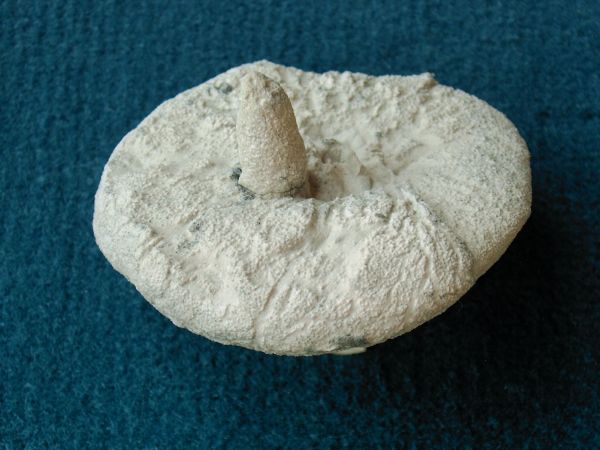
The pictured specimen of Callopegma acaule has a cylindrical process, slightly off-center and next to the central oscules. It consists of megaclones and probably represents a parasitic or symbiontic overgrowth by an undetermined sponge. - Four very similar specimens known to date.

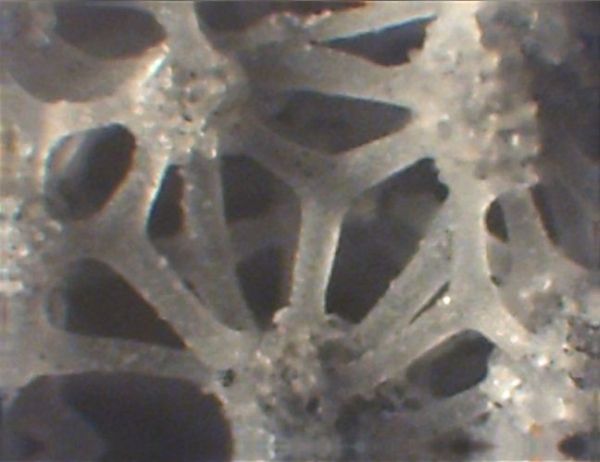
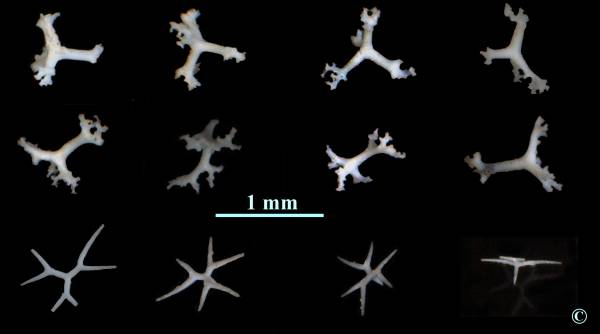
The skeleton of Callopegma acaule is composed of smooth tetraclones united by zygosis. Particularly on the basal surface of the sponge body the tetraclones form a very conspicuous, dense, fabric.
The dermal scleres are large and slender dichotriaenes with short shafts (rhabdomes). Usually, dermal scleres are not very abundant and are easily overlooked.
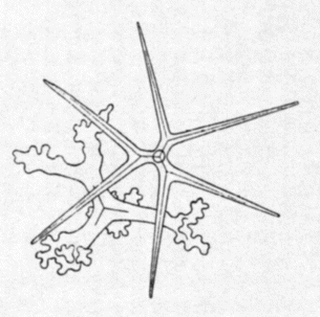
Scleres of Callopegma acaule as sketched by Schrammen (1910).
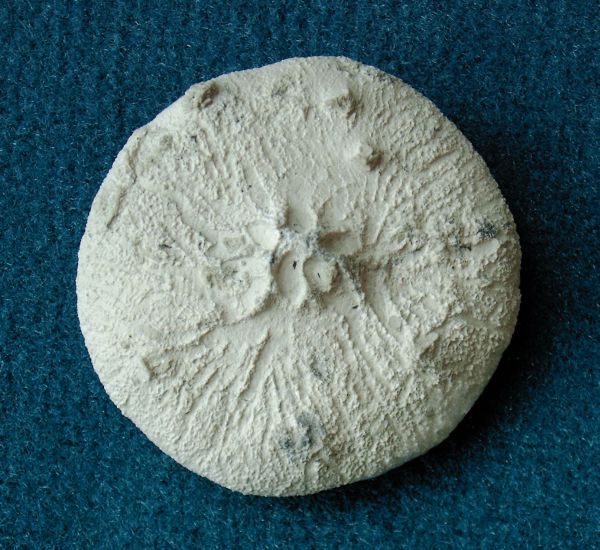
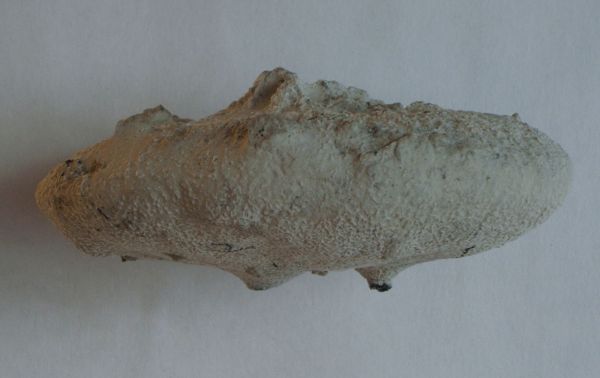
Callopegma depressa
Roemer 1864
Callopegma depressa is similar to Callopegma acaule, the difference being the very flat disc shape and commonly smaller size.
In the author's opinion, Callopegma depressa is not a different species, but just an extreme habit of Callopegma acaule.